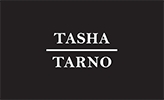We choose only the finest natural materials for all our garments because they are completely renewable, sustainable and a pleasure to wear. As a global company we understand our responsibility to reduce our environmental impacts and risks and create opportunities that will allow us to operate a successful sustainable business. Like many organizations, we do not always have direct control over every stage of our product life cycle. However, we strive to implement best practices across our value chain, to do the right thing for our business, and our planet. Understanding the origins of materials, we use is paramount to upholding our high quality standards. This means knowing who is making them, where the raw materials come from, and how they were made. In our sourcing process we are focused on 3 areas: 100 % traceability of origin, ethical farming and trapping conditions, and respect for workers, the environment and biodiversity. Traceability plays a key role in assessing the sustainability of the whole leather and shearling chain and spreading good practices such as the ones related to raw materials issues. We strive for excellence in our supply chains while at the same time preserving natural resources, something that is a necessity. We aim to source from farms and tanneries that guarantee the highest standards of animal welfare combined with respect for people and environment. The tanneries and factories that we work with are fully compliant with chemical, environmental and labor regulations. they use proper equipment and waste management procedures to make good quality leathers and shearlings. the workforce is treated with respect and given appropriate work wear and training.







